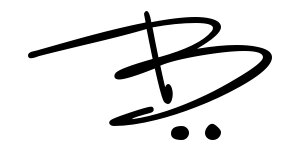Electroforming organic objects
I recently had the opportunity to do a big batch of pressed leaves for a friend and thought this might be a good opportunity to give some tips to makers. This is not a full tutorial on how to electroform. I suggest you check out this great write up by Enchanted Leaves for an overview and tutorial of the whole process. Below are just some additional tips that I thought of while doing this batch of pressed leaves.
First tip: try to avoid pressed leaves. Many details on fine leaves are lost when they are pressed. For more robust leaves, you can try fresh and can get them sealed and in the bath soon after picking, you will end up with a more detailed final project that has the natural curve and movement inherent in a fresh leaf. But, you risk the leaf wilting if you don’t work fast or if your sealant reacts to the organic material. Dried leaves that are not pressed flat is also an option - you can wait for them to naturally dry, try to oven bake them dry, use desiccant, etc. In this case though, the leaves were shipped overseas and there was no choice but to press flat.
Prepping the leaves
Clear off any loose debris. Like all organics, leaves will need to be sealed before adding the conducive paint and entering the bath. I used two coats of acrylic spray, drying between coats. In the first image below, you can see that the leaves were so thin and fine, they became translucent after sealing. Tip #2 - I also recommend you use a silicone mat to rest your items on while waiting for them to dry. I forgot I had one until later and had to move my leaves around during the entire drying process to keep them from sticking to the paper I stupidly had them on.
Adding conductive paint
I started with two coats of Safer Solutions copper coating - and it was sliding right off my sealed leaves. I did get work somewhat but I was not happy with the spotty coverage. In the end, I added two more coats of my home-brew ModgePodge-water-graphite paint. Each of these four layers had to dry between coats, and this time I was smart enough to use the silicone mat.
Attaching hardware
My friend wanted loops on her leaves to make earrings, which posted some interesting challenges. In the end, I looped 26 gauge copper wire, and then affixed it with superglue to the back-side of each leaf. I tried to keep the glue as smooth as possible. Tip #3 - I left a long tail off each loop to serve as the attachment point to my cathode bar. it is so much easier to add your attachment point right into the piece itself. After electroplating, it is easy enough to clip off the tail and grind down any residuals.
In the second image, you can see that I had to get real creative with scotch tape in order to hold down the wire while waiting for the glue to dry.
One problem with doing leaves, or any extremely light object is the tendency for the object to float in the tank solution, especially when the wire attachment point is as thin as the 26 gauge I used. Tip #4 - To combat this, I looped glass beads towards the bottom of each wire close to where the leaf was attached. It’s a crummy picture, but you can see in the third picture the leaves with beads attached.
Getting everything into the tank
Tip #5 - make sure to space out everything enough that they don’t touch. See pics 4 & 5. I didn’t do a great job of this on the first batch and ended up having to pry apart two of the leaves.
Post-electroplating evaluation
All my leaves came out salmony and more discolored than usual. Maintaining the tank solution is nigh impossible and my ratio of anode to cathode was probably off. I have brightener on order. But that doesn’t help me for this large project. Tip #6 is to get yourself a jewelry tumbler to save yourself the elbow grease. See images 6-9 for the before and after tumbling.













